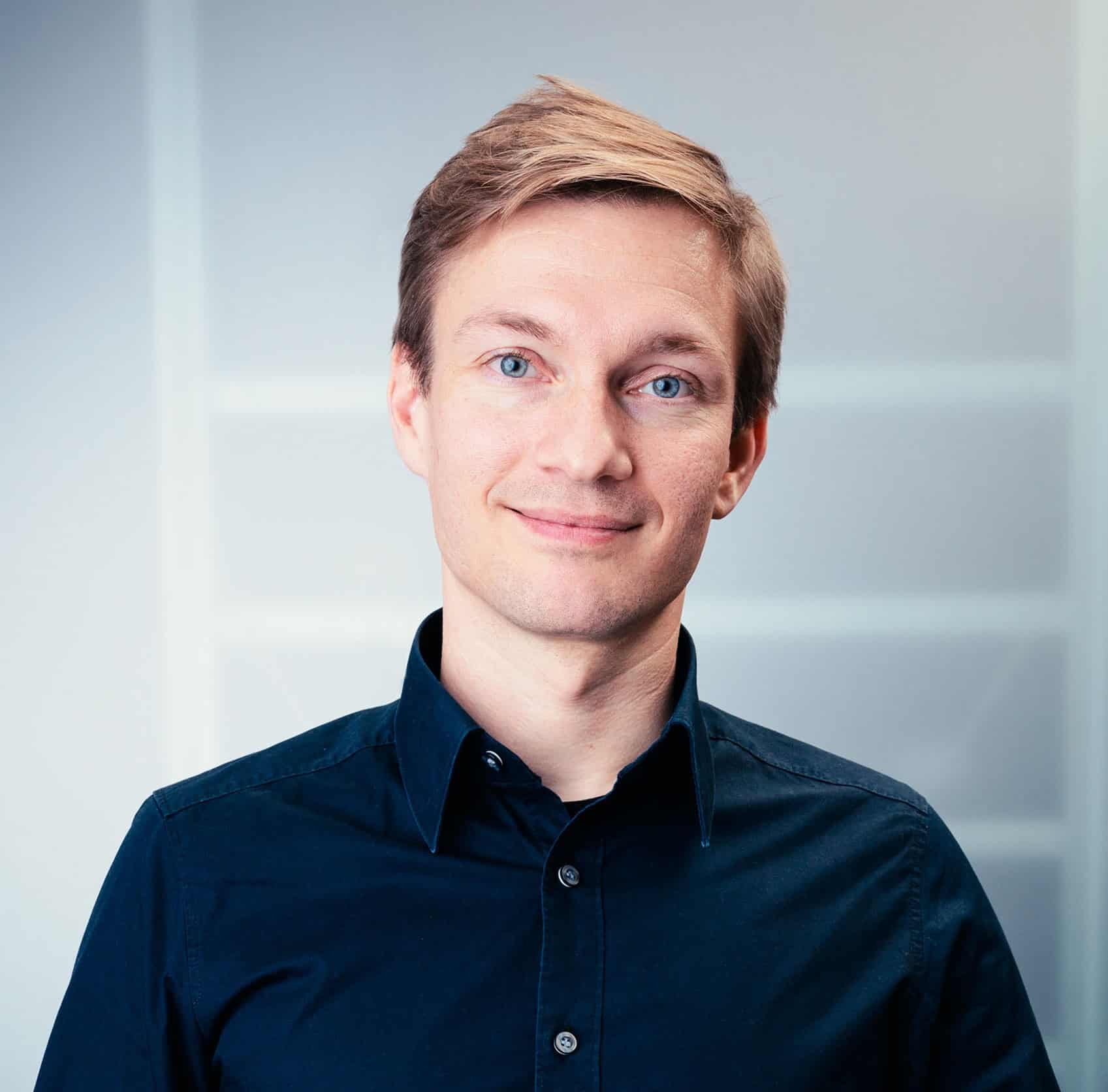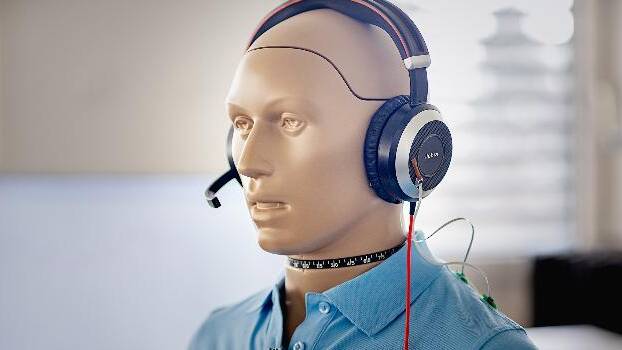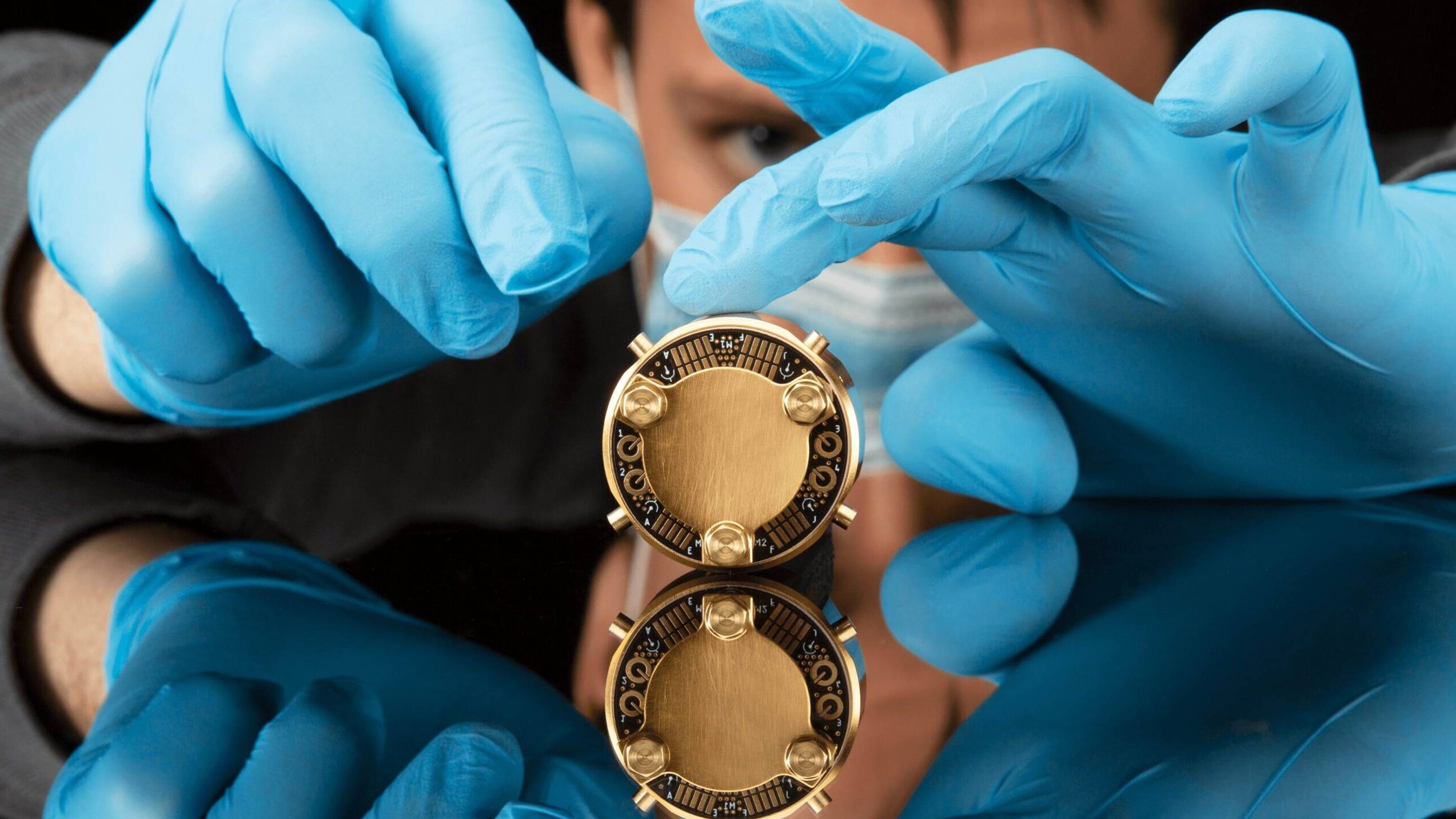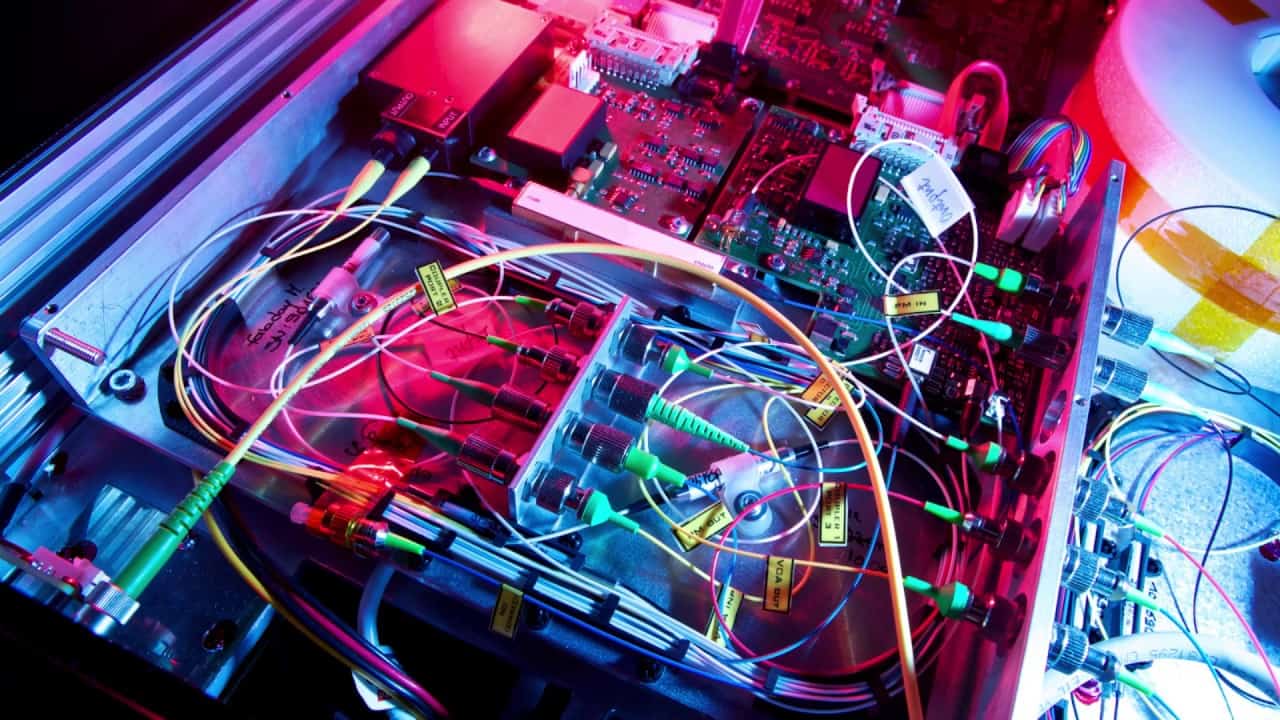Quantum technology promises to revolutionize computing, communication, and encryption by harnessing the power of quantum mechanics. However, these delicate processes need to operate at very low temperatures to maintain their coherence and existing cooling methods are based on very rare and expensive materials. In this interview, Alexander Regnat, talks about how his startup kiutra developed an alternative cryogenic cooling method, based on magnetic refrigeration, that is more efficient and scalable than existing methods, as well as the company’s growth and ambitious vision for the future.

Managing Director and Co-founder, kiutra
Alexander is Managing Director and Co-Founder of kiutra. He earned his PhD in physics from the Technical University of Munich for his low-temperature research on novel intermetallic compounds. With a strong background in cryogenics, he co-founded kiutra in 2018 to support the development and industrial adoption of quantum technologies by means of sustainable magnetic cooling.
You previously worked in research, what made you decide to become an entrepreneur?
What we are commercializing today, the technology and the devices that we’re building on top of it, are something we initially developed for our scientific research. Not only myself, but also my other co-founders. Jan [Spallek] and I were working at the Technical University of Munich, doing basic research on novel intermetallic compounds to investigate exotic magnetic properties and develop new functional materials that could be used perhaps one day for, e.g. storage technology. You need very low cryogenic temperatures to analyze these novel materials. We saw all the limitations of existing solutions and decided to come up with something new that we would like to work with. We then realized that probably others could also benefit from our solution. Not only that, but that there was an even larger potential to apply the cooling technology we were developing, not only for basic science and material research, but beyond that, in applied quantum technologies.
How was the transition from academia to entrepreneurship?
We found it challenging, but we like doing new things. That’s what pushed us to pursue scientific work. What drives us is that we want to see our technology succeed on a global scale. We know it can help others reach exciting new results, new capabilities and new knowledge. And now that there’s a growing number of research groups and companies applying what we’ve developed, it’s really satisfying, because we see that with our work, we can contribute to their success. What we are doing is enabling scientific and technological breakthroughs and that, for me, personally, is worth striving for.
There is a very well-developed commercial cooling technology sector used for high-performance classical computers. Why can’t these technologies be applied to quantum computers?
It’s because standard high-performance computers run at room temperature or close to it. They generate a lot of excess heat that has to be dissipated. You can do that by applying traditional industrial-grade cooling technology. This is completely different for quantum technologies, most notably quantum computing, where the chip or the quantum device used for the application needs to run at cryogenic temperatures well below room temperature, typically -260 to -273 degrees Celsius. There are different technology platforms, but all quantum technologies to some extent require cryogenic cooling that cannot be achieved through traditional cooling methods.
Why does quantum technology require such low temperatures?
Quantum technologies explore quantum mechanical effects that are very fragile. To make these usable, you have to screen them carefully. Artificial environments are used to do that, and one important ingredient is cooling. You need to remove excess heat, you need to ensure the quantum device is not heated up, because this would destroy the quantum mechanical effect and then the technology becomes unusable. This holds true for all sorts of quantum technologies, not only computers, but also many communication and quantum sensing devices. That’s why cryogenic cooling is a universally required technology for quantum.
What are the existing quantum cooling technologies and why are they not enough?
The most mature quantum computing technologies are currently based on superconducting qubits, and they need to be operated at a very low millikelvin temperature, thousands above absolute zero (-273 degrees Celsius equals 0.15 Kelvin). To get to these very low temperatures, just two technologies are available. The prevailing technology used today is dilution refrigeration based on helium-3. A mixture of helium-3 and helium-4 gas is liquefied and circulated. Through this mixture, millikelvin temperatures can be achieved. The only alternative technology that can be used to reach these very low temperatures is magnetic cooling, which is what kiutra is using. The largest benefit we see in magnetic refrigeration, compared to the prevailing helium-3-based cooling, is that it can actually be scaled, because it does not rely on critical supplies. Helium-3 is a very scarce resource, which makes it very expensive. People are even considering mining it on the moon because it’s so rare on Earth. What we offer is an alternative approach to get very low temperatures while avoiding the dependency on helium-3, which makes it a sustainable and scalable method that, on top of it all, is very easy to use.

Invest in Startups
As one of Europe’s most active venture capital investors, we grant qualified private investors access to top-tier European startups. With investments starting at EUR/CHF 10’000, you can build your own tailored portfolio over time and diversify across stages and sectors.
How does magnetic cooling work?
It leverages something called the magnetocaloric effect. There are certain materials that, if you apply a magnetic field to them, warm up. If you then remove the magnetic field, they cool down. This second step is what we’re using to generate cooling in our machines. Since the cooling happens after the magnetic field is removed, the correct name for the technology is actually demagnetization refrigeration. But it’s easier to just say magnetic cooling (laughs).
Since you talked about helium-3 being very scarce, what about the materials needed for magnetic cooling?
In all our machines, we use well-established media that have been around for decades. Different materials are used depending on the temperature range we want to achieve. The one we use most often is ferric ammonium alum (FAA), a standard material commonly used in chemistry. Many materials that can be used for their magnetocaloric properties are widely available, quite cheap, and nonhazardous. That’s one of the key benefits.
Magnetocalorics is also a very active research area. There are research groups all over the world investigating new materials that could be used for their magnetocaloric effect not only for what kiutra is doing, ultra-low temperature cooling, but also for moderate or even close to room temperature cooling. These might be applied in the future, for example, to magnetocaloric cooling of food, medical samples, air conditioning, and even industrial-scale refrigeration such as natural gas or hydrogen liquefaction. Because what is also common for all magnetocaloric refrigerators is that they can be more effective compared to traditional gas-based technologies, which means that by using them, a lot of energy could be saved.
There are different types of quantum computing technologies currently being developed. Can kiutra’s technology be used for all of them?
We’re optimizing our refrigerators not only for millikelvin temperature to serve superconducting technologies, which are the most mature quantum technologies available today, but also for semiconductor-based approaches such as spin qubits, where cryogenic cooling is needed in the range of 0.5 to 1 or 1.5 Kelvin. We’re even building refrigerators that do not integrate magnetocaloric coolers, but are just closed-cycle refrigerators, for other technologies, like trapped-ion quantum computers, that also need cryogenic temperatures during their scale up, but not as low as other solutions. Our devices are optimized according to the specific requirements of every quantum technology platform.
Verve Ventures invested in Kiutra for the first time in its Series A in 2021. How has the company evolved since then?
In the last two years, we have made significant progress. Our team has grown to over 50 people, and we have hugely improved our products and technology, which are now much more established on the market. We have recurring customers and some of them are leading institutes and companies not only from Germany, but also the EU and the US. And we will be shipping our first systems to Israel and Japan soon. We now want to scale up the company and the technology further and increase our market penetration, most notably in the US.
Who are kiutra’s customers?
We separate our customers into three groups. One is university research groups, mostly in material and quantum science. The second group are Research and Technology Organizations (RTOs). These are typically state-funded, large-scale facilities that are in between academia and industry. They buy our machines and set them up to either do research themselves or to provide the infrastructure to industry customers that cannot build it themselves yet. The third customer group are privately owned companies that are typically active in the field of applied quantum technologies. They buy our devices because they need ultra-low temperatures to analyze their fabrication processes, get fast feedback and optimize the fabrication of their qubit chips. In this group, we have corporate customers, but also startups that are entering the field and need cryogenic temperatures for the development, quality assurance and testing of their products.
What is next for kiutra?
We want to further roll out our existing products internationally and become the leading player in industrial grade, fast feedback testing of quantum hardware. To achieve this, we plan to grow our sales and marketing team. So far, we have focused mostly on low-temperature characterization and testing of quantum devices, a market where we could get immediate benefits for our customers and demonstrate the viability of our technology. Moving forward, we want to scale up our technology further for applications that demand more cooling power and even lower temperature, most importantly full stack quantum computers.
Written by
WITH US, YOU CANCO-INVEST IN DEEP TECH STARTUPS

Verve's investor network
With annual investments of EUR 60-70 mio, we belong to the top 10% most active startup investors in Europe. We therefore get you into competitive financing rounds alongside other world-class venture capital funds.
We empower you to build your individual portfolio.
More News
16.01.2023
“We want our technology to be in every headphone”
Our portfolio company AVAtronics recently showcased its noise canceling technology in Seoul. Verve Ventures was also on site and had a chance to catch up with CEO Jeyran Hezaveh and talk about AVAtronics’ ambitious plans to conquer the headphones and hearables market.
24.11.2021
Growth capital for quantum cooling startup kiutra
The financing round is led by the new shareholders TRUMPF Venture and the Swiss deep-tech VC Verve Ventures. Together with the existing investors High-Tech Gründerfonds (HTGF), APEX Ventures and the Initiative for Industrial Innovators, the syndicate is investing a mid-seven-digit amount in the spin-off from the Technical University of Munich.
05.11.2021
“You won’t have a quantum laptop at home soon”
Grégoire Ribordy is a pioneer among entrepreneurs in the quantum industry, his startup ID Quantique just turned 20. In this industry, he talks about the quantum internet, the difficulty of balancing near-term and long-term goals, and the startup Miraex.
Startups,Innovation andVenture Capital
Sign up to receive our weekly newsletter and learn about investing in technologies that are changing the world.




